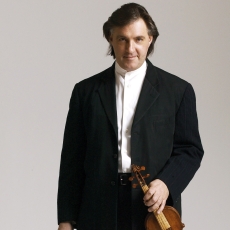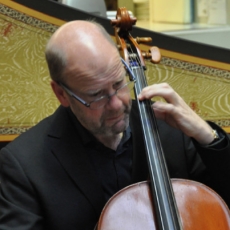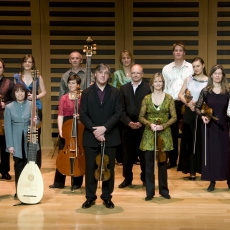The Avison Ensemble - Corelli: Opus 1 & 3 - The Consort
This pair of discs rounds off in triumphant fashion the complete recording of the published collections of Corelli (1653-1713) by the Avison Ensemble. To plan the recording of 24 outwardly very similar trio sonatas of the 'church' type in a way that pleases equally the collector seeking 'reference' versions of cherished works, the binge listener who customarily listens to a whole CD or even a pair of discs at a single stretch and the more fastidious listener with time for only one or two sonatas is no small challenge, but one to which the players rise very successfully. There is just enough diversity in the continuo instruments (Richard Tunnicliffe on cello, Paula Chateauneuf on archlute and Roger Hamilton variously on harpsichord and organ) to provide sufficient variety of colour, mirroring the changing overall mood of the pieces, and I was pleased by the avoidance of fussiness in the instrumental mixing and matching: the principle of one unchanging scoring throughout each work is rigorously maintained. If there is one player among the three to single out, it is Chateauneuf, who has an ability to voice her chords and execute her arpeggiations with stunning effect. The pleasingly holistic approach of the players brings out, as few recorded performances do, the remarkable thematic unity of each work. In Corelli - and especially in the early op. I (1681) - the segregation of individual movements, which implies the existence of a clear distinction between a movement and a section within a movement, is only inchoate: the simple melodic shapes heard at the outset of the first movement persist in various guises throughout the work almost in the manner of early 17th-century variation suites or even `cyclic' works from the late 1901 century. Whether intuitively or following a conscious aesthetic decision, the ensemble manages, by subtle emphases, to imprint these shapes, reinforcing one's feeling for the macrostructure of each sonata and making better sense of the apparent jumble of often very short musical components. Some smaller details work less well. Many of the slow movements (Adagio or Largo) feature copious extempore ornamentation from both violins (Pavlo Beznosiuk and Caroline Balding) that disregards the admonition in J J Quantz's famous flute tutor and performance guide (Versuch einer A nweisung die FlOte traversiere zu spielen, Berlin, 1752, ch.I 6, para.24) that in trios few Manieren can be introduced. Of course, Quantz is only expressing a personal opinion, but the wisdom of his advice becomes apparent whenever the rhythmic co-ordination of the violins becomes slightly unstuck through over-complex gracing. In particular, several final cadences are made rhythmically messy through fussy trilling, arpeggiation or ornamentation in a manner that unavoidably recalls the favourite style of ending a piece in jazz, where the players simultaneously relax metrical exactitude and let off steam as a signal for closure. Admittedly, the use of ornamentation allows the slow movements to maintain their momentum at a slower pulse, which is a definite gain, but I think the line between flexibility and slackness is crossed too often. One puzzling feature that does no real musical harm but contradicts Corelli's intention is the da capo-like repetition of the penultimate movement (Allegro) after the last movement (Presto) of the fourth op.1 sonata.
This is a sonata with a void key signature that operates as if in conventional A minor until the final close of the Presto, which is a Phrygian cadence ending on an E major chord. Did the players perhaps assume that to end the sonata thus was self-evidently unsatisfactory, tempting them to find an ad hoc solution? In reality, the indicated ending is perfectly consistent with the theory and practice of the 1680s: the sonata is in the fourth tuono ecclesiastic° (as classified by theorists from Banchieri to Bononcini), which is related to the older Hypophrygian mode. If nothing else, this recording throws into relief the very considerable stylistic evolution undergone by Corelli between op.1 and op.3 (1689). The first collection is full of quirks, strong rhetorical effects and touches of deliberate strangeness (the bizzarria so prized by Italian composers and by connoisseurs such as Queen Christina). The second collection, more polished but also more predictable, is a sample card of the devices and turns of phrase recognisable as classically Corellian, and which became replicated in work after work by his imitators, as also by Corelli himself in his later collections. Finally, a compliment to the booklet text writer, Simon Fleming, who has once again, on the fourth occasion in this recording project, produced a very readable and illuminating commentary.



